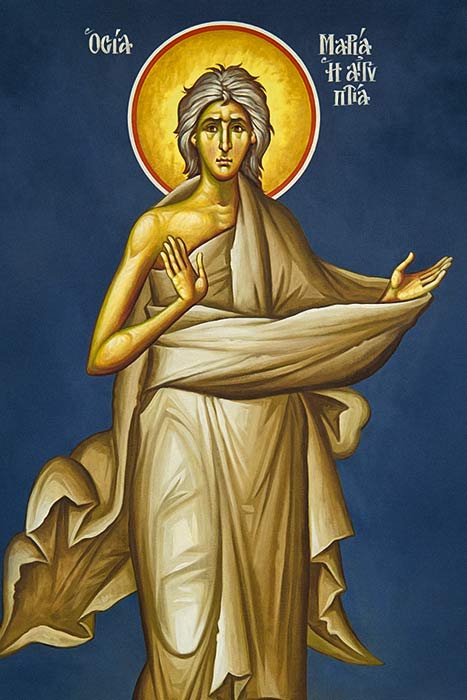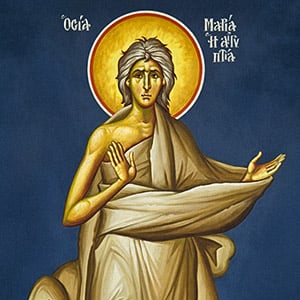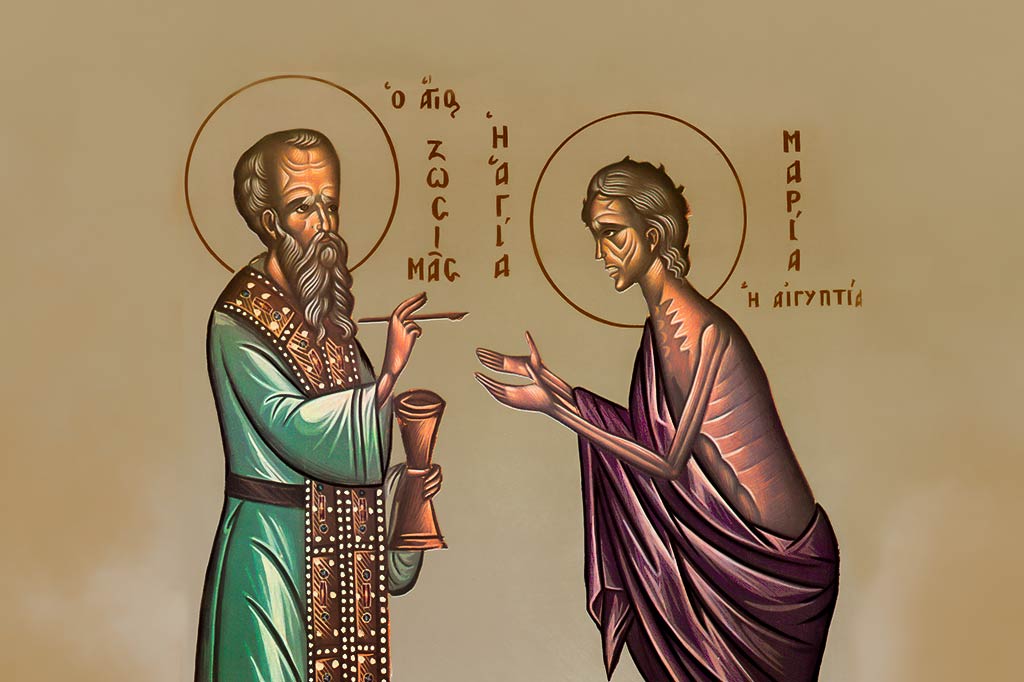The Grace Rainy Rogers Auditorium
Most Reverend and Beloved Brother in Christ, Archbishop Demetrios of America and other beloved Hierarchs,
Honorable members of the Board of Trustees of the Metropolitan Museum of Art,
Esteemed Director of this Museum,
Dear Benefactors and Supporters of the Fine Arts,
Dear Friends,
Throughout the world, Byzantine icons have served as eloquent ambassadors of a religious tradition that unfortunately has not always been properly understood. “Both well known and yet unknown”: this is how I would characterize the situation of the Byzantine icon today. “Well known,” because unlike written texts or devotional practices, icons do not require special linguistic skills or formal religious commitments in order to be viewed and appreciated. Icons are “well known,” in other words, because, as works of great visual power and beauty, they address themselves directly to all who encounter them. At the same time, however, icons are not simply works of art, and cannot be reduced to their aesthetic features or to the historical and cultural circumstances of their production. Indeed, to objectify the icon in this manner is to see only its secondary, superficial qualities, which have little meaning or purpose when viewed in isolation from the icon’s mysterious and unfathomable depths and its beautiful message for human existence.
And this is confirmed by the experience of even the most casual observers, who have suddenly found themselves overtaken by the light of the icon, captivated by its luminous presence, at once so strange and so familiar. And what is this presence, if not the presence of humanity transformed by its union with the divine? What is this beauty, if not the beauty of the human person fully transparent to the indwelling glory of the divine archetype? Every icon is thus a manifestation of the human person, and, like the bodies of the saints, every icon is the physical locus of their spiritual energy. From this it follows that icons are not simply art objects, but rather subjects, who invite us to enter into the transfiguring light of a day that knows no evening.
The icon is intrinsically intertwined and ultimately identified with the Orthodox tradition in its entirety, handsomely expressing its message of love and hope. This is clear already from the end of the ninth century, when the restoration of the holy icons was understood as the restoration of the Orthodox Church to its authentic faith and form. It is worth remembering, moreover, that the Orthodox Church went through an intense struggle, during that period of Byzantine history, known as “iconoclasm” (eijkonomaciva). In that struggle, those who sought to repress the images of Christ and His saints revealed their deeper hostility against mankind, for they destroyed not only wooden panels and wall paintings, but tortured and even put to death those who defended the icons. The discomfort of the iconoclasts with the icons was in essence a discomfort with the human body, and ended in acts of violence against human beings, who are Gods’ living icons. The iconoclastic controversy lasted for more than a century and redefined Byzantine Christianity in light of the new emphasis on the icon, which was thereafter granted a central role in the expression of the Church’s theology, worship and ultimately, understanding of what the human person really is. This last point has particular importance because the Church’s association of the icon with basic anthropological concepts has been decisively influenced by the inspired words of the Book of Genesis, which states that man was fashioned “according to the image (eikon) and likeness (omoiosis)” of God (Gen. 1.26). Before we say anything more about this fundamental biblical passage, let us reflect for a moment on the meaning of the word “image” or “icon.” In Greek, these words are the same; icon – eikona is simply the Greek word for “image.” But what exactly is an “image”? How are we to understand the basic meaning of the word “icon”? According to St. John of Damascus, “an image is a likeness, or a model, or a figure of something, showing in itself what it depicts,” to which he adds, “every icon is both like and unlike its prototype.”
With the words “like” and “unlike,” we seem to be presented with two different ideas moving in opposite directions, but they are in fact two sides of the same experience, two aspects of the same reality. As the “likeness” of something else, on the one hand, the image is not independent of what it portrays; it is not distinct from the reality to which it points, but rather is intimately connected to it, and looks toward that reality as the source of its existence and identity. On the other hand, the reality to which the icon directs us is outside of itself, beyond itself, like the source of an image reflected in a mirror, which is similar to, but not identical with, its reflection, and this is why St. John says that the image is also “unlike its prototype.” Thus every image is both continuous and discontinuous with its source, both similar and dissimilar to that which it reflects. This is the paradoxical reality of every icon, the truth of which can be grasped only in the proper relation to the prototype.
Let us now return to the Biblical concept of man, who is said to be made “according to the image and likeness” of God (Gen. 1.26). Keeping in mind the words of St. John of Damascus that we just cited, we can say that man is brought into the world, as a living icon of God, standing in relation to God as an image does to its prototype. Man’s very existence speaks of a relationship to God, of a “likeness” to God, and human beings can find meaning and truth only when they live “iconically,” that is to say, in dynamic and continuous relation with their divine source. As the divine icon, every human being is the manifestation of his or her luminous prototype.
This is the high calling to which human beings are summoned. This is the visual message of the Byzantine icons. Man was created and brought into the world in order to be the radiance of God. This is what man can achieve when he struggles to diminish the dissimilarity and to be “like” his divine prototype, and to realize his inner potential as an icon of God. To the extent that he realizes this high calling, he will “show within himself” the image of the absolute divine prototype, the pure reflection of the “glorious day star that has risen in his heart” (2 Pet. 1.19).
Here we come to the first important point of the legacy of the Byzantine icon for humanism, especially for today’s movements, ideas, and concepts related to humanism, and this point is that the icons of the Orthodox Church in their immense variety and in their amazing depictions of the human person give us the message that human beings have been created in the “image and likeness of God,” and that they are mirrors reflecting the luminous nature of the Divine Being. A luminous reflection, following the idea of similarity and dissimilarity between prototype and image or icon, can vary in degree and quality from its prototype. The element of increased radiance projected by the Byzantine icon challenges the beholder to an effort of increasing the intensity and enhancing the quality and purity of his own reflection of the luminous prototype. The Byzantine icon makes a definitive statement that human beings, regardless of anything else, are in essence images and icons and reflections of the luminous nature of God. But this is not a static, passive and unchangeable condition. It is open to transformation, to an increase in intensity and brilliance: from the light of a candle, to the shining of a star, to the brilliance of sunshine.
Let us proceed now to a second important point concerning the legacy of the Byzantine icons for humanism.
The second point is strongly projected by the fact that Byzantine icons depict an enormous variety of saints - men and women of all ages, races, and ethnicities, and from the entire spectrum of social conditions - with a single characteristic in common: the status of being holy. As one contemplates an icon of a saint, one is compelled to ask the question: what is the essence of holiness? What is the distinctive mark for a holy person? How does the Church recognize that a particular person is saintly? One might simply answer that a saint or a holy person is someone who is pure in heart, struggles heroically against his or her own evil passions and sinful desires, opposes evil in the world, and fervently pursues virtues. However, the Byzantine icon of a saint bears witness to something more: it testifies that the saint is in essence a person who has chosen God above and beyond anyone or anything else. This means that the saint has made God his or her absolute priority.
As we see the icon of a saint we can hear his or her voice saying: “God is my priority.” This constitutes an inspiring legacy for humanism in our days. Contemporary people are suffering today because their priorities are misplaced; their value systems are confusing, contradictory and simply misleading. Today there are anthropological theories that build on wrong priorities. The icon reminds us that a solid and viable anthropology cannot be truly functional if it is not based upon the priority of God in human life. The centrality of the depiction of saints in the Byzantine iconographic tradition, extending diachronically over many centuries, implies specifically this fundamental idea of the priority of God as the leading vital principle for each and every human being regardless of time and place.
Now we may proceed to a third point. The Byzantine icons in many instances depict scenes and situations in human life in which love and charity is a dominant theme. In such instances we come face to face with a very powerful legacy for humanism. A healthy, genuine and functional humanism always has at its center love and charity. Care for our fellow human beings, especially care for those in need, difficulty and pain, has been always a recurring issue, preserved in innumerable icons. Characteristically, such icons have a special format. We see the saint in the center of the icon and around him or her, running along the top, bottom and sides of the icon, we see various scenes that present instances of the saint’s benevolent, charitable actions. We see the saint healing the sick, distributing food and clothes, pleading on behalf of the oppressed and disadvantaged, protecting children, instructing the faithful, and in similar expressions of love and concern for his or her fellow human beings. In these instance, the icons offer a visual commentary on central passages of the Gospel declaring that God is love or presenting the ultimate criterion of judgment articulated by Christ Himself: “I was hungry and you gave me food, thirsty and you gave me drink, a stranger and you welcomed me, naked and you clothed me, sick and you visited me, in prison and you came to me” (Matthew 25:25-36).
We cannot overemphasize the significance of the legacy of the Byzantine icons for a genuine humanism. Humanism without intense love, deep care and honest concern for suffering human beings is simply not humanism at all. The love so abundantly projected by the Byzantine icons constitutes a crucial and indispensable component for any humanism worthy of its name.
Now we come to the fourth and very important point of the extraordinary offering by the Byzantine icons, a point drawn from the enormous number of images focusing on Jesus Christ and on the Theotokos, the Mother of God.
The Byzantine depiction of Christ either in mosaics or in frescoes or in portable icons constitutes a truly unique and unsurpassed legacy for humanism. The reason is obvious. Jesus Christ as He is presented in His human nature is undoubtedly the perfect human being, the unique and absolute prototype of anthropos, man. Standing in front of a Byzantine icon of the Lord we are truly overwhelmed by the mystery of a God who became a perfect human being, like one of us in every way except sin. There does not exist a more definitive and more sublime legacy for humanism then the legacy granted to us by the Byzantine icons of Christ, through which the value and dignity of our fallen human person is restored and elevated to unheard-of heights. Here we understand the comment by St. Athanasios the Great writing in the 4th century AD who says that God became a human being so that the fallen Adam could become God. This is a legacy for a humanism which can anticipate theosis, which means the deification of any man and woman living on earth. Theosis is the condition in which the reflection of the Divine nature in the human nature reaches the highest possible similarity, and the dissimilarity between prototype and image is radically diminished. This astonishing possibility is brought powerfully and vividly to our consciousness when we contemplate the images of the Mother of God. These icons testify to the potential for a human being to become a person full of grace, replete with Divine power, a genuine manifestation of God’s love and power.
I would like to close with a fifth and final point concerning the Byzantine icon as a legacy of humanism. It deals with the legacy for humanism offered in the icons of the crucifixion of Christ. The crucifixion of Christ confronts the beholder about the immensity of the love of God for humanity. We encounter in the image of the Crucified Lord, as well as images of other incidents associated with His passion, a God who identifies with humanity to the point of experiencing with us bodily pain and spiritual suffering, and, finally, death. Thus, the icon of the crucifixion provides humanism with the reality of the presence of a God who is with us in full participation during our own ordeals and tragedies. Such an image gives to humanism resources for courage, hope and strengthening under any circumstances and in confrontations not only with unpredictable opposition but even with the unimaginable in terms of evil and pain.
Here, we would like to draw your attention to a beautiful icon dating back to the fourteen century that you immediately encounter as you enter the new exhibition, “Byzantium: Faith and Power.” This is an astonishing icon painted on its two sides. On the one side is depicted the Mother of God with the appellation, Pafsolipi, that is to say, “the one who removes sorrow.” And there is a reason for this, because on the other side is an image of the Crucified Christ who is the absolute means for eliminating any sorrow and pain.
* * *
The Byzantine Icon: A Legacy of Humanism.
As a beautiful revelation of the reality of the human being as an image and witness of God. As a carrier of the light of God. As a manifestation of the luminous nature of God as reflected in every human existence.
The Byzantine Icon: A Legacy of Humanism.
By establishing and emphasizing the priority of God as a life attitude exemplified in the lives of the saints and martyrs.
The Byzantine Icon: A Legacy of Humanism.
In its emphasis on the centrality of love and care as an integral and indispensable component for any true humanism.
The Byzantine Icon: A Legacy of Humanism.
By focussing on God becoming a human being in the person of Christ thus, opening the avenue for human beings to become partakers of the Divine nature. Here humanism as a theory about human beings reaches unheard of and undreamt of heights, a condition already suggested by the icons of the Mother of God. And finally, The Byzantine Icon: A Legacy of Humanism.
By offering the icon of Christ who shares our ordeals, pain and death. Thus, giving to anthropology the means for sustaining human existence under any circumstances.
As you are going to visit, I am sure, this extraordinary and magnificent exhibition, “Byzantium: Faith and Power,” in this splendid museum, please take your time to contemplate one of the greatest human achievements: the Byzantine Icon, an achievement of an incomparable art, which manages to combine what is beautiful and artistically exquisite with truly divine messages. These messages offer to us today, as they have throughout many centuries in the past, the most refreshing, most powerful and most creative insights into a genuine and truly human humanism, a humanism which begins with God, grows with God and culminates with God transforming the human being into a partaker of the Divine nature.



